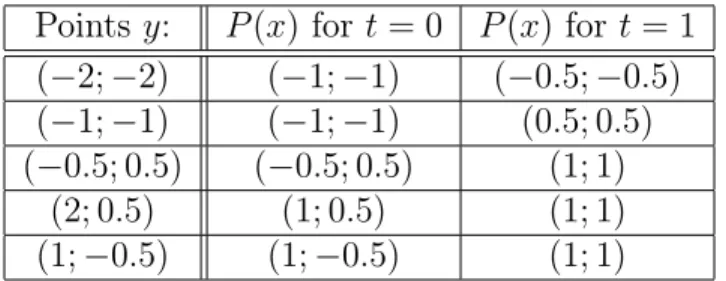Universität Konstanz Sommersemester 2015 Fachbereich Mathematik und Statistik
Prof. Dr. Stefan Volkwein Sabrina Rogg
Optimierung
http://www.math.uni-konstanz.de/numerik/personen/rogg/de/teaching/
Program 2 (6 Points)
Submission by E-Mail: 2015/06/08, 10:00 h
Optimization with boundary constraints Implementation of the Gradient Projection Algorithm
So far we looked for (local) minimizer x ∗ ∈ R n of a sufficiently smooth and real valued function f : R n → R in an open set Ω ⊆ R n :
x ∗ = argmin
x∈Ω
f (x).
The first order necessary optimality condition is ∇f(x ∗ ) = 0.
If Ω is given as the closed and bounded domain Ω =
n
Y
i=1
[a i , b i ] = {x ∈ R n | ∀i = 1, ..., n : a i ≤ x i ≤ b i , a i , b i ∈ R , a i < b i },
the above condition must be changed to admit the possibility that a (local) minimizer is located on the boundary of the domain. In Exercise 11 we prove the following modified first order condition:
∇f (x ∗ ) > (x − x ∗ ) ≥ 0 for all x ∈ Ω. (1) The canonical projection of x ∈ R n on the closed set Ω is given by P : R n → Ω,
P (x)
i :=
a i if x i ≤ a i x i if x i ∈ (a i , b i ) b i if x i ≥ b i
.
It can be shown:
x ∗ satisfies condition (1) ⇔ x ∗ = P (x ∗ − λ∇f (x ∗ )) for all λ ≥ 0
The gradient projection algorithm (using the normalized gradient as descent direction) works as follows: Given a current iterate x k . Let d k := − k∇f(x ∇f(x
k)
k
